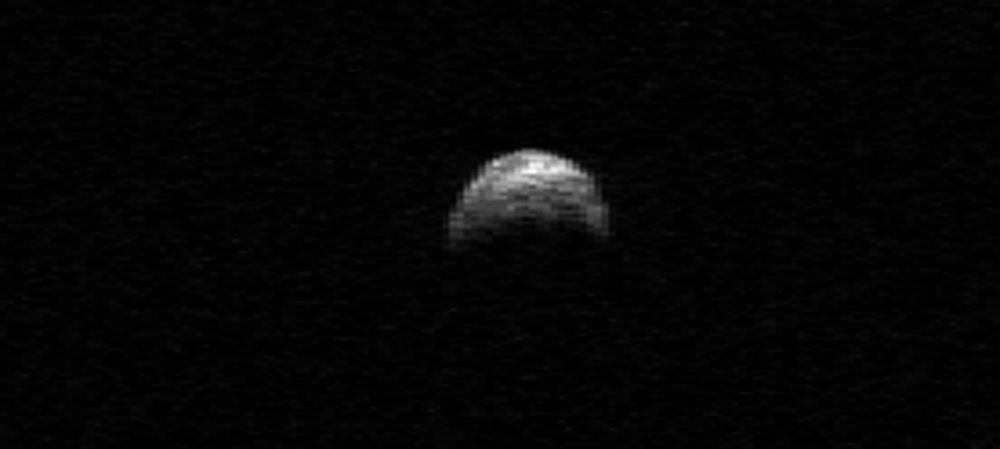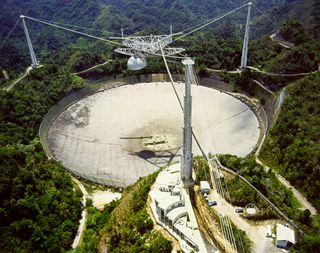How to Spot the Huge Asteroid 2005 YU55's Close Encounter With Earth

Skywatchers hoping to glimpse a huge asteroid as it flies close by Earth Tuesday (Nov. 8) will need the right equipment — and a little bit of luck — to spot the faint and fast-moving space rock in telescopes, scientists say.
The interloping space rock, called asteroid 2005 YU55, will pass between Earth and the orbit of the moon on Tuesday (Nov. 8), but does not pose a threat to our planet, NASA scientists have said. The asteroid is about the size of an aircraft carrier, spanning approximately 1,300 feet (400 meters), and is the largest space rock to have a close encounter with Earth with advance notice in 35 years.
Asteroid 2005 YU55 is expected to pass closest to Earth at a range of about 201,700 miles (324,600 kilometers) on Tuesday at 6:28 p.m. EST (2328 GMT). The average distance between the moon and Earth is about 238,854 miles (384,399 km).
Skywatchers around the world are gearing up for the event, but actually spotting the asteroid as it flies by Earth could be tricky, said Scott Fisher, program director of the National Science Foundation's Division of Astronomical Sciences. Still, the asteroid flyby will be visible from the northern hemisphere, and Fisher offered some helpful tips in an NSF webchat on Nov. 3 organized by ScienceNow. [Photos: Flyby of Giant Asteroid 2005 YU55]
Hunting for a giant asteroid
During its closest approach to Earth, asteroid 2005 YU55 will not be visible to the naked eye, and Fisher said that skywatchers will need a telescope with at least a 6-inch mirror to see it.
"It turns out that YU55 is going to be pretty faint when it flies by," he explained. "To make it even more difficult to observe … it will be moving VERY quickly across the sky as it passes."
Get the Space.com Newsletter
Breaking space news, the latest updates on rocket launches, skywatching events and more!
"The best time to observe it would be in the early evening on November 8th from the east coast of the US," Fisher said. "However! It is going to be VERY faint, even at its closest approach. You will need a decent sized telescope to be able to actually see the object as it flies by."
The event marks the first time since 1976 that an object as large as asteroid 2005 YU55 has passed this close to Earth, Fisher said. The next time an asteroid of similar size will approach close to Earth will be in 2028.
This means it will be a unique opportunity to capture images of the space rock using ground-based telescopes.
"Thousands of amateur and professional astronomers will observe this object near [its] closest approach to Earth," said Don Yeomans, manager of NASA's Near-Earth Object Office at the Jet Propulsion Laboratory in Pasadena, Calif. "However, it is moving too fast on the sky for Hubble to observe it."
The asteroid's coordinates for any given time are available at the JPL Solar System Dynamics website here: http://ssd.jpl.nasa.gov/.

Radar (asteroid) love
Astronomers intend to use telescopes to collect detailed radar images of asteroid 2005 YU55 as it makes its closest approach. Observatories in Hawaii will also try to analyze the space rock's composition, researchers said.
"It turns out that this close approach gives us a great chance to study this kind of object," Fisher said. "One thing we are going to do is obtain radar images of the object as it flies by. I've read that we will be able to see details down to a size of about 15 feet [4.6 meters] across on the surface of the asteroid."
Fisher, Yeomans and other astronomers have repeatedly assured the public that asteroid 2005 YU55 will not crash into Earth or the moon, and will not cause any gravitational effects on our planet as it flies by.
"There is no reason to worry about YU55 getting caught up in the gravity of the Earth," Fisher said. "Through our observations of the object, we know that there is NO chance of it impacting either the Earth or the moon for at least the next 100 years."
If you snap a photo of asteroid 2005 YU55 during its Nov. 8 flyby of Earth and would like to share it with SPACE.com, send the image and your observing comments to SPACE.com managing editor Tariq Malik at tmalik@space.com.
Follow SPACE.com for the latest in space science and exploration news on Twitter @Spacedotcom and on Facebook.
Join our Space Forums to keep talking space on the latest missions, night sky and more! And if you have a news tip, correction or comment, let us know at: community@space.com.

Space.com is the premier source of space exploration, innovation and astronomy news, chronicling (and celebrating) humanity's ongoing expansion across the final frontier. Originally founded in 1999, Space.com is, and always has been, the passion of writers and editors who are space fans and also trained journalists. Our current news team consists of Editor-in-Chief Tariq Malik; Editor Hanneke Weitering, Senior Space Writer Mike Wall; Senior Writer Meghan Bartels; Senior Writer Chelsea Gohd, Senior Writer Tereza Pultarova and Staff Writer Alexander Cox, focusing on e-commerce. Senior Producer Steve Spaleta oversees our space videos, with Diana Whitcroft as our Social Media Editor.












